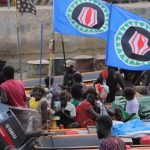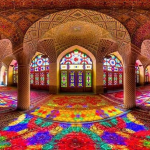With its abbundance of natural resaources, the currency of Papua New Guineanamely the Kina not only used to give the USD a run for its money (no pun intended), but was also one of the strongest in teh region.
Alas poor goevrnance, correuption and sintability have changed that somewhat, but it is still an important simple of the country and a bellweather of how things are goibg. And while cards are gaining in promience, cash is very much still king in PNG.
Table of Contents
History of currency in Papua New Guinea
Papua New Guinea did not always have its own currency. Before independence in 1975, Australians dominated the financial system and the Australian pound, later replaced by the Australian dollar, was standard. Local trade, especially in rural areas, often relied on shells, barter, and small coins for minor transactions. The Kina was introduced in 1975 when PNG gained independence, replacing the Australian dollar at a rate of two Kina to one Australian dollar. The name “Kina” comes from a type of shell used for trade in local societies for centuries.
Initially the Kina was strong thanks to mining exports and resource wealth. The 1980s and 1990s saw periods of inflation, government mismanagement, and corruption which reduced its strength. Today, the Kina floats independently, though the Australian dollar remains widely understood. Despite ups and downs, the Kina is still a symbol of PNG’s independence and remains essential for everyday life, particularly outside urban centres where cash is the only option.

Banknotes of Papua New Guinea
Banknotes in PNG are colourful and practical. Early notes introduced in 1975 featured birds of paradise and portraits of local leaders. Modern notes maintain similar themes with cultural motifs, native wildlife, and prominent political figures. Denominations range from 2 Kina up to 100 Kina.
The smaller denominations are polymer for durability in the humid climate. They are simple to use, sturdy, and widely recognised across the country. For locals, these notes are everyday tools to pay for food, transport, and goods. For visitors, they are functional and make decent souvenirs.
Coins of Papua New Guinea
Coins in PNG are practical and utilitarian. Denominations run from 1 to 50 toea, with 1 Kina coins also in circulation. Designs feature native animals and the national crest. Coinage was introduced after independence, originally based on Australian sizes and patterns.
Smaller coins wear down quickly in everyday use, but larger coins hold up well. They are widely used in markets and rural areas where banknotes or card payments are impractical. Coins remain essential for locals and tourists alike, and they are a simple, tangible reminder of the country.

Exchange rates of the Kina
The Kina is PNG’s official currency, but it is not a powerhouse. Its value has been affected by inflation, government mismanagement, and dependence on resource exports. The Kina floats against major currencies and changes daily, so it pays to check before exchanging. Cash is king outside cities, so knowing the value helps budget and avoid being short-changed.
Approximate exchange rates as of now:
- 1 USD = 3.50 Kina
- 1 EUR = 3.70 Kina
- 1 AUD = 2.50 Kina
- 1 GBP = 4.10 Kina
- 1 NZD = 2.30 Kina
- 1 CAD = 2.60 Kina
- 1 SGD = 2.55 Kina
- 1 JPY = 0.026 Kina
- 1 CNY = 0.50 Kina
- 1 CHF = 3.80 Kina
These rates fluctuate daily, particularly against the US and Australian dollars. Airports and banks give official rates; outside Port Moresby, ATMs or local changers may offer slightly different values.

Acceptance of cards in Papua New Guinea
Accetance of major cards such as Mastercard and Visa has goone up greatly in the last two years in PNG. All major shops, hotels, and restaurants now take, and even prefer, cards. ATMs are widely available in cities.
With that being said, most people still live rurally and rely entirely on cash. This means when you head into the ocuntrysoide or explore remote parts of PNG, cash is very very much king. Cards are handy in urban areas, but in villages or smaller towns, don’t expect to pay with plastic.
How to change currency in Papua New Guinea
Despite the reliance on tourist dollars, it is actually harder to change money in Papua New Guinea than you might think. The easiest place to do this is at Jackson International Airport, where money changers lie slap bang in the midele of arrivals and departures.
Technically you can also change money at banks, but they are so busy it is basically hell on earth to do. Some malls in Port Moresby will also change currency, but outside the capital options are extremely limited. ATMs are convenient if your card works internationally, but don’t rely on them in rural areas. Rule of thumb: sort your cash at the airport, carry enough Kina for the road, and you’ll be fine.

Currency of Papua New Guinea
And that is how currency in Papua New Guinea works. Change some at the airport, use ATMs in cities, and carry cash when heading out into the countryside. The Kina is still very much king, and the coins and banknotes themselves make a simple, practical, and authentic souvenir.
Click to check out our Papua New Guinea Tours.





